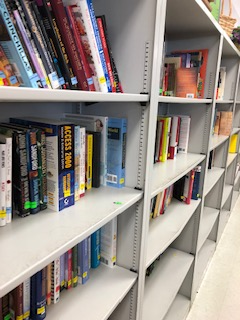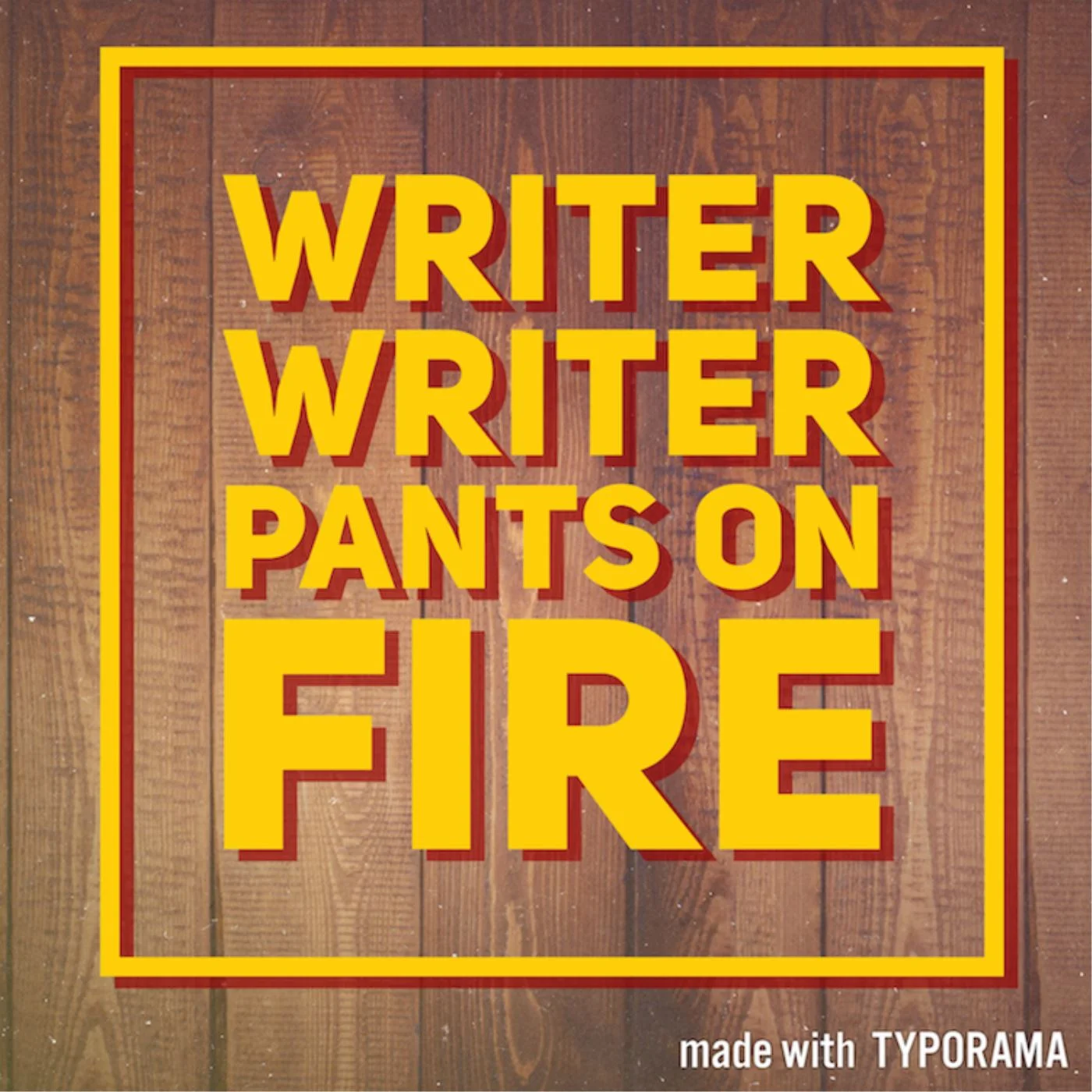Bookshop Interview :)
I had the great joy of participating in this Bookshop Interview at fellow author James H. Duncan’s website.
Check it out, along with James’s excellent books.
Goodwill Bookshelves, photos courtesy of Amanda McGrath
That Holding-First-Copies Feeling
Look what arrived, straight from my awesome publisher at Vine Leaves! I had to commemorate the moment with my new photo backdrop. ;)
I couldn’t be happier with the text and cover of my new craft book for poets, Poetry Power! One month and counting until publication day! #oct26thlaunch
More details at: Vine Leaves Press, Poetry Power . (The Amazon link for ordering in the States and abroad is at the site as well.)
What reviewers are saying: "Reading Poetry Power by Melanie Faith--chock-full of humour, personal asides, and sensible, doable suggestions to improve one's writing--I felt a continual urge to write and revise my poems. A perfect guide for the poet who wants a refresher course in the basics of this 'little genre' (and a few photography hints) from a new point of view and who needs a nudge to live more deliberately, Faith's book reminds me of an intimate conversation between two engaged introverts for whom layers of complicated interior depth--juxtaposed in the 'nooks and crannies' of dreams and fragments of memory--hold the key to discovery and development of a unique, artistic voice that rings with universality." Helen Losse, author of Every Tender Reed
"This is the definitive book on, for, and about poetry. Melanie more than delivers on the promise she made in the Introduction: This book is meant to reach you where you are and to withstand multiple readings as you explore your individual writer's path. Indeed! I find that no matter what funk I'm in, I open Poetry Power and I discover my next step on my poetry journey. I know my fellow poets will too!" Mari L. McCarthy, International Best-Selling Author of Journaling Power: How To Create The Happy, Healthy Life You Want To Live!
What reviewers are saying: "Melanie takes her readers by the hand and walks them through the whole process of writing, publishing, editing and loving poetry. Little personal vignettes scattered throughout Poetry Power made me feel like Melanie was a friend. It was as if we were in a writing group together and she was sharing her writing secrets. Each chapter ends with a Try this Prompt that are easy and exciting to try. They range from something that might take a few minutes, to others that were more involved. In my second, third, and so on readings of Poetry Power I will jump into the prompts with feet, hands and heart. I am already making a list of the people I will be purchasing a copy of Poetry Power for--and they include writers from all genres, not just poets. This is a book that all writers will benefit from reading." —Tricia L. McDonald, Writer and CEO Splattered Ink Press
Photography Publication, and It's a Peach ;)
The Sunlight Press just published another of my fine-art photos, “Ladder and Leftover Peach Triptych.”
They also featured a few paragraphs about the symbolism and the photo’s inspiration, among other things. Check it out.
Poetry Power: Update!
Hurry, fall! Next month, my poetry craft book will be released.
Super excited to share this volume packed with prompts and real-world writing, editing, and publishing advice with poets, teachers, writing groups, classes, and more.
My book birthday: October 26, 2018. You know you want one for you and the writing friends in your life.
"Raising the Stakes in Flash Fiction" Published
The fine artistic folks at Nunum just published another of my craft articles! Check it out: "Raising the Stakes in Flash Fiction."
They also feature great work & interviews with visual artists, such as Jon Fox, other articles about flash fiction (such as this one by Amie E. Reilly: "So What if You Don't Get Anywhere in a Flash"), as well as writing submission interviews (such as with literary luminaries Duotrope) answering the insightful questions: "How much do you want to know about the person submitting to you? and "If you publish writing, how much of a piece do you read before making the decision to reject it?"
Image by: Andreas Fidler, www.unsplash.com
It's All about the Tropes, My Friends! My Craft Article Published
My craft article about creating artistic imagery using tropes appeared at Women on Writing today.
Image by: Jose Alonso
www.unsplash.com
"Tropey-Dokey: Enhancing Imagery with Tropes"
By: Melanie Faith
12:30 in the afternoon was a sacrosanct time for my grandma and my mom. It was the starting time for their favorite soap. As in their “stories.” Month after month, year after year, from two houses a half-town apart both of which used rabbit-ear antennas so popular in the ’70s and ’80s, they tuned in five days a week. Eagerly, they followed the unfurling complications of characters both glam-tastic and down-on-their-luck in a fabled city that had the same name as a European city (which didn’t hurt the appeal).
Okay, so sometimes the plot lines were admittedly fantastical—amnesia and never-before-mentioned twin siblings, anyone? Still, the protagonists (and often the rascally antagonists, too) were likeable in their emotional conflicts and botched intentions.
Soap operas— like most novels, visual storytelling such as photos and movies, and plays— are based on comforting tropes, you know: those recurring motifs and literary devices that we can often foresee but still wait around to watch how it all shakes down anyway.
Unlike learning calculus or molecular biology, we don’t have to strain to notice bits and pieces of what it’s like to struggle and to celebrate human foibles and small triumphs within the characters whose lives unfurl scene by scene, even if our own lives don’t involve heirs/heiresses, ballrooms, or jet-setting.
Lest you think soap operas are solely low-brow and cheesy escapism, think again: tropes can be traced as far back as the ancient world. In Classical Greece the term meant “turn,” and is still used in modern Deconstruction Theory. Aristotle, in Poetics, discusses common tropes in tragedies and epics.
The important part about tropes is that viewers, readers, and artists all relish patterns. Also, these recognizable patterns can lead to some wonderful extended narratives. I’ve seen many photo series based on developed tropes from fairy tales and other imaginative and recognizable patterns.
In short: tropes, my friends, are our friends.
It’s not rocket science, but that’s not usually what we need from the art we enjoy or the art we create-- art is the balance of tension between the familiar and the human need for escape from drudgery. Resonant art has elements of the recognizable as well as elements of transcendence. Too much of one over the other leaves us cold, with no connection to the material. Too little of both, and it likely won’t catch much less hold our attention in the barrage of sights, sounds, and events flooding our days.
Tropes might seem a shortcut, but they provide a meaningful jumping off point for riffs on numerous human experiences.
Timeless recurring tropes explored in the visual and written arts include:
· Misunderstood or conflicted protagonists, commonly in youth but occurring in other life stages, too
· Changes of personal or group identity, mistaken identity
· Changes of locale/geography, escape
· Love gained, love in trouble, love lost, love regretted
· Death and the dying process
· The un-suppressible secret
· The unexpected accident and its aftermath
· Retribution/Payback (whether delivered person-to-person or on its own)
· Changing seasons—both geographic and internal/metaphorical
· Rescue—of others, of self
· Reunions of individuals (former friends, former enemies) or groups
Try this Prompt! Pick three of the above tropes. Jot ideas for ten minutes, without stopping to censor yourself, for how you might express these common tropes using your own unique talents and photo-taking skills.
Also consider locations or backdrops and possible props or subjects you might incorporate into each of the three tropes.
Compare and contrast the notes you take on your chosen three tropes. Cross out the most-cliché or obvious description of the three, and pick one of the other two tropes to make into a photo session or a photo series. Go!
******
My "Photography for Writers" online class starts on September 21st. I'd love to get to work with more creative, inspired folks.
No previous training with a camera necessary (you can use a camera phone or any other types of cameras you might enjoy).
Guaranteed to inspire your Muse and enliven your written imagery as well.
More details about the four-week course: "Photography for Writers."
Announcing a Fun New Project: Got Poem? ;)
This project's got wabi-sabi (the art of perfect imperfection) written all over it and plenty of heart.
What do you get when you combine a Royal manual typewriter, an MFA word-nerd in poetry, and a zest for all things celebratory?
Poem Art, of course!
Cool News: Podcast
A spot for my flash-fiction craft book will appear on Writer, Writer, Pants on Fire, an awesome podcast by talented author Mindy McGinnis that's jam-packed with great advice and resources for fellow writers.
The ad will run in the episode with Lamar Giles, which will air this Monday morning, August 20th, at 5 AM EST.
Not awake then? No worries: it will be available for your enjoyment any time thereafter at: Writer, Writer, Pants on Fire Check out the retro-cool typewriter sounds in the background.
Great News and Etsy Mid-August Sale
In celebration of two wonderful reviews of my fine arts photography, I'm currently running a 20% sale of all of my fine art as well as my Portable Muse Prompt Cards. The sale will run through August 26th.
Peruse my entire shop, including the photo below-- 32 gorgeous items in all: here.












